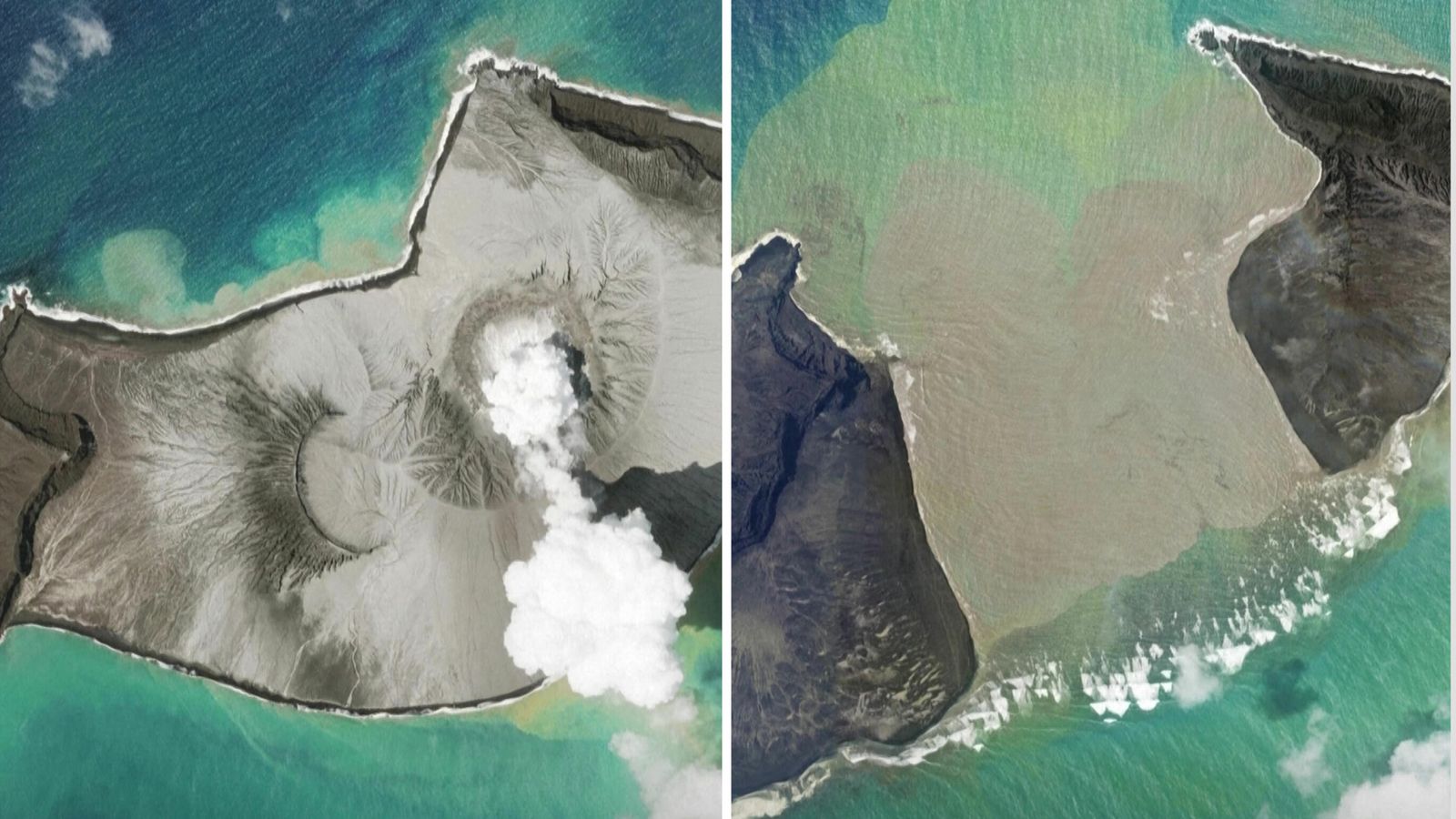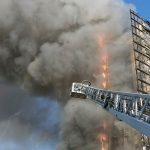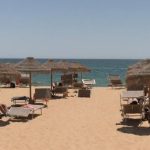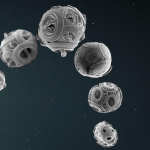A distress signal has been detected in an isolated, low-lying group of islands in the Tonga after an undersea volcano erupted near the South Pacific island on Sunday.
Large tsunami waves were sent crashing on to the shores of the archipelago, with two people reported missing on the main island of Tongatapu.
Angela Glover, from Brighton, disappeared and was swept away by the water – her body was later found during a search organised by her husband.
Please use Chrome browser for a more accessible video player
The UN Office for the Co-ordination of Humanitarian Affairs (OCHA) said there had been no contact from the Ha’apai group of islands and there was “particular concern” about two small low-lying islands – Fonoi and Mango, where an active distress beacon had been detected.
According to the government, 36 people live on Mango and 69 on Fonoi.
The uninhabited volcanic island of Hunga-Tonga-Hunga-Ha’apai all but disappeared following the blast, according to satellite images from around 12 hours later, as it was blanketed in clouds of volcanic ash.
The impact of the eruption was felt as far away as Fiji, New Zealand, the US, and Japan and two people drowned off a beach in northern Peru due to high waves caused by the tsunami.
Tonga tsunami: Body of British woman swept away by wave found
Tsunami-hit Tonga: Surveillance flights sent to assess damage – as ash cloud covers island
Tonga diplomats have expressed concern about the risk of aid deliveries spreading COVID-19 to the island, which is currently virus-free.
Any aid sent to Tonga would need to be quarantined, and it was likely no foreign personnel would be allowed to disembark the aircraft, Tonga’s deputy head of mission in Australia, Curtis Tu’ihalangingie said.
“We don’t want to bring in another wave – a tsunami of COVID-19,” he added.
International communication has been severely hampered by damage to an undersea cable, which could take more than a week to restore, and Australia and New Zealand were assisting with satellite calls.
Local telephone networks have been restored but ash is now posing a health concern as it contaminates drinking water.
The Ha’atafu Beach Resort, on the Hihifo peninsula, 21 km (13 miles) west of the capital Nuku’alofa, was “completely wiped out”, the owners said on Facebook.
The family that manages the resort had run for their lives through the bush to escape the tsunami.
Please use Chrome browser for a more accessible video player
“The whole western coastline has been completely destroyed along with Kanukupolu village,” it said.
It is believed to be the worst volcanic eruption the Pacific has experienced in decades, with up to 80,000 people affected.






















